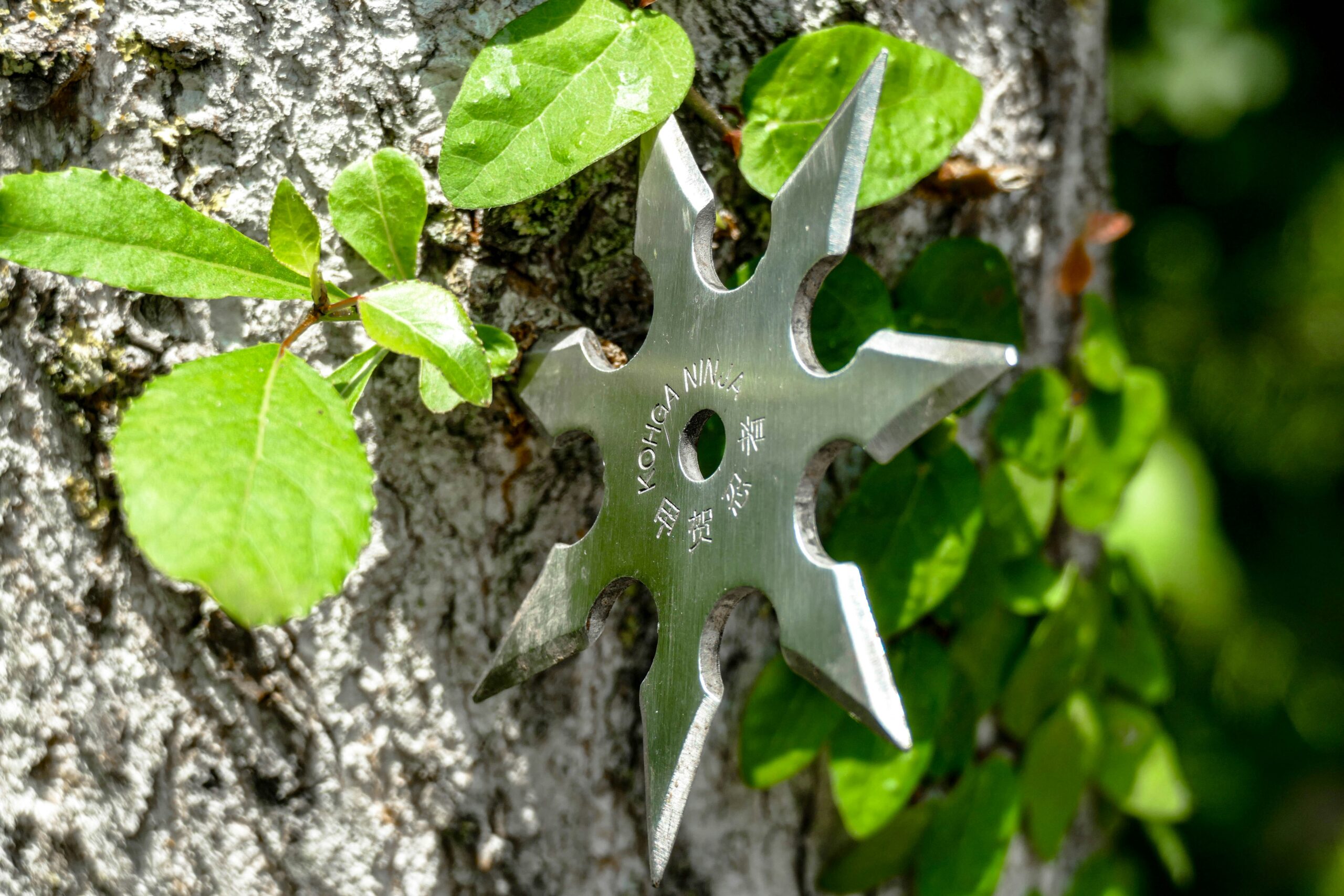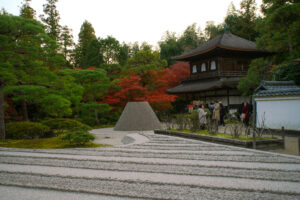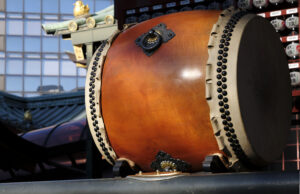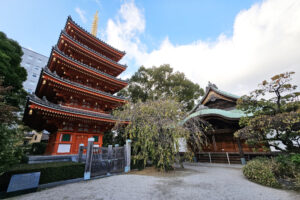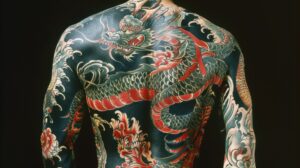In the shadowy world of ninjas, the shuriken emerges as a symbol of stealth and precision, a testament to the skill and discipline of its wielder. These traditional Japanese throwing stars, with their rich history and intricate craftsmanship, continue to captivate the imagination of martial arts enthusiasts and cultural scholars alike. We embark on a journey to unveil the secrets of ninja star mastery, tracing its origins, exploring its varied forms, and understanding the science and skill behind its effective use. From historical warfare to modern practice, the art of the shuriken remains a fascinating component of Japanese heritage, offering insights into the discipline and techniques of the legendary ninja warriors.
Shuriken: The Ancient Art of the Ninja Star
The shuriken, often referred to as the ninja star, is more than just a weapon; it is a symbol of the covert operatives of feudal Japan known as ninjas. This ancient art, shurikenjutsu, involves the skilled throwing of these small, bladed objects with precision and speed. The practice was shrouded in secrecy, taught in the shadows and passed down through generations. The shuriken’s design, optimized for concealment, allowed ninjas to carry them unnoticed, making them perfect tools for distraction, deterrence, and defense. Mastery of the shuriken was considered essential for a ninja, reflecting their philosophy of resourcefulness and adaptability.
Tracing the Origins: Shuriken’s Historical Journey
The historical journey of the shuriken traces back to feudal Japan, an era marked by warfare and the rise of the samurai class. Initially, shuriken were not designed as primary weapons but as supplementary armaments for samurai warriors and ninjas. Their origins are murky, with some theories suggesting they were adapted from tools used in daily life and agriculture. Over time, these implements evolved into specialized weapons. Different schools and regions developed their unique styles and techniques, contributing to the rich diversity of shuriken designs and throwing methods known today. This evolution from utility tool to weapon of war underscores the ingenuity of ancient Japanese warriors.
The Making of a Shuriken: Craftsmanship Unveiled
Crafting a shuriken requires precision, skill, and a deep understanding of its intended use. Traditionally, blacksmiths who specialized in creating ninja weapons forged shuriken from scraps of metal, which were then meticulously sharpened and balanced. The craftsmanship involved in making a shuriken was considerable, as the weight and balance of each piece had to be perfect to ensure accuracy and consistency in flight. Different shapes and sizes were developed for various purposes, including penetration, cutting, and ease of concealment. Today, the art of making shuriken is preserved by a handful of skilled craftsmen who honor the traditions and techniques passed down through generations.
Types of Shuriken: Understanding the Varieties
Shuriken come in two main types: bo shuriken (stick-type) and hira shuriken (flat, plate-type). Bo shuriken are straight, spike-like projectiles, often with a pointed end, designed for stabbing and piercing. In contrast, hira shuriken, commonly known as ninja stars, are flat with multiple points and are designed to cut or embed in a target. Each type has its specific techniques for throwing, and mastery of both is considered a mark of a skilled practitioner. Beyond these two categories, there are numerous variations in design, each adapted for specific tactical advantages and concealment strategies.
The Science Behind the Throw: Physics of Precision
The effective throwing of a shuriken involves a deep understanding of physics. Key factors such as the center of gravity, aerodynamics, and angular momentum play crucial roles in ensuring accuracy and impact. A well-thrown shuriken follows a predictable trajectory, with the thrower adjusting for distance, wind, and target movement. The grip, stance, and release are critical elements, with practitioners often spending years refining their technique. This scientific approach to shurikenjutsu highlights the blend of art and science within traditional martial arts, where mastery is achieved through the understanding and application of physical principles.
Training the Mind and Body: The Path to Mastery
Mastery of the shuriken requires more than just physical skill; it demands mental discipline and a deep connection between mind and body. Practitioners must cultivate focus, patience, and precision, qualities that extend beyond martial arts into daily life. Training involves repetitive practice, meditation, and the study of the philosophies underlying ninjutsu. The path to mastery is long and challenging, requiring dedication and a willingness to learn from failure. For those who persevere, shurikenjutsu offers not only a unique martial skill but also a means of personal development and self-understanding.
Shurikenjutsu: The Martial Art of Shuriken Throwing
Shurikenjutsu, the martial art dedicated to the throwing of shuriken, encompasses a wide range of techniques and philosophies. This art form is not merely about throwing blades but also involves strategies for distraction, misdirection, and the creation of openings for escape or further attack. Practitioners learn to throw with both power and precision, often incorporating movement and evasion into their techniques. Shurikenjutsu is traditionally taught as part of a broader ninjutsu curriculum, emphasizing stealth, subtlety, and the element of surprise. Today, it is practiced by martial arts enthusiasts worldwide, drawn to its effectiveness and historical mystique.
From Warfare to Modern Practice: Shuriken’s Evolution
While the shuriken’s historical roots lie in the battlefields of feudal Japan, its modern practice has evolved significantly. Today, it is embraced as a sport, a form of exercise, and a way to connect with Japanese culture and history. Competitions and demonstrations showcase the skill and precision of contemporary practitioners, while workshops and classes introduce newcomers to the basics of shuriken throwing. This evolution from a tool of war to a modern martial art underscores the adaptability and enduring appeal of shurikenjutsu, offering a bridge between past and present.
The Cultural Significance of Shuriken in Japan
In Japan, the shuriken holds a place of cultural significance, embodying the spirit and skills of the samurai and ninja warriors of old. It represents the ingenuity, discipline, and martial prowess that are key aspects of Japan’s historical warrior classes. Museums, festivals, and historical sites celebrate the art of shurikenjutsu, offering insights into its historical context and continued relevance. For many Japanese, the shuriken is a symbol of national heritage, a reminder of the depth and richness of traditional martial arts.
Mastering the Art: Techniques and Tips for Beginners
For those drawn to the art of shuriken throwing, mastering the basics is the first step on a rewarding journey. Beginners are advised to start with the proper stance and grip, focusing on balance and body alignment. Understanding the dynamics of each throw, and practicing with patience and consistency, is crucial. Safety is paramount, with training often beginning with rubber or foam shuriken before progressing to metal. Finding a qualified instructor and engaging with a community of practitioners can provide invaluable guidance and support.
Shuriken in Popular Culture: From Ninja Movies to Manga
The shuriken has transcended its martial roots to become an icon of pop culture, featured prominently in ninja movies, anime, and manga. This portrayal has contributed to a global fascination with ninjas and their arsenal, inspiring a new generation to explore the martial arts. While often sensationalized in media, these representations have played a key role in preserving and spreading interest in traditional Japanese culture and martial practices.
Preserving the Legacy: Shuriken Masters of Today
The legacy of the shuriken is kept alive by dedicated masters who continue to practice, teach, and innovate within the art. These individuals are not only skilled practitioners but also custodians of history, ensuring that the techniques and philosophies of shurikenjutsu are passed down to future generations. Through their commitment, the ancient art of the ninja star remains a vibrant and dynamic component of the martial arts world, bridging the gap between tradition and modernity.
The journey into the world of shuriken unveils a martial art rich in history, skill, and cultural significance. From its origins on the battlefields of feudal Japan to its place in modern martial arts practice, the shuriken has remained a symbol of precision, discipline, and the ninja’s stealthy prowess. As practitioners continue to train in the art of shuriken throwing, they not only keep alive a fascinating aspect of Japanese heritage but also contribute to the global tapestry of martial traditions. The path of shurikenjutsu, challenging and rewarding in equal measure, offers a unique way to connect with the past, master the body and mind, and perhaps, touch the spirit of the elusive ninja.
